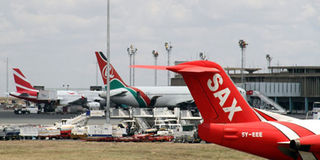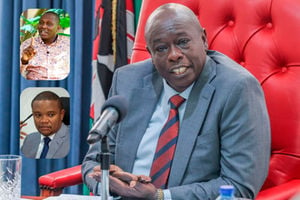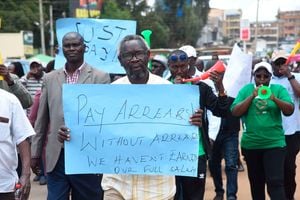Airstrip plan flies into birds migration path

Planes on runways at the JKIA, Nairobi. Nakuru County may not realise its dream of having an airstrip due to fears that it might interfere with the movement of flamingos. PHOTO/DIANA NGILA/FILE
What you need to know:
- The need to establish the airstrip away from birds is underlined by losses incurred when planes collide with birds.
- The construction is estimated to cost Sh60 million, dependent on the length of the runway and the quality of materials used.
Nakuru County may not realise its dream of having an airstrip due to fears that it might interfere with the movement of flamingos.
A search for a suitable terrain away from the birds’ migratory corridor between Lake Nakuru and Lake Elmentaita has not yielded fruit.
Prospects by the Kenya Civil Aviation Authority (KCAA) of building an airstrip at a 600-acre piece of land at Pipeline were abandoned after the National Environment Management Authority (Nema) declined to approve the project on grounds that the airport land lay along flamingos migratory route.
Although the Nakuru County government had proposed to the authority two sites, one in Njoro and another in Naivasha, the former was rejected due to poor terrain.
Surveying the Naivasha site
Engineers from the Kenya Airports Authority (KAA), which is mandated with provision of airport infrastructure, and others from the KCAA, the air transport regulator, are surveying the Naivasha site.
“We (KAA) have our engineers and those from the KCAA surveying the Naivasha site and once the process is complete, we will be able to know if it is suitable,” said Ms Angela Tilitei, the KAA corporate communications manager, during an interview.
“The Njoro location, which had been proposed by the Nakuru County government, was found to be unsuitable because of the poor terrain.”
The number of travellers expected to use the airstrip, the direction of wind and the type aircraft that will be using it are among factors that will determine the approval.
1 million travellers
As a domestic airstrip, it is projected to serve about one million travellers annually.
The construction is estimated to cost Sh60 million, dependent on the length of the runway and the quality of materials used.
However, the airstrip’s economic viability will also be a factor.
“The government does not want to spend money on an airport or airstrip that will not generate any revenue or enough profits to sustain its services,” said Mr Henry Ogoye, the head of corporate planning and strategy at KAA.
The need to establish the airstrip away from birds is underlined by losses incurred when planes collide with birds.
Repair of a failed engine due to a strike of a bird requires up to Sh300 million, a huge amount that can be invested in the KAA expansion projects, according to Mr Erick Kiraithe, the authority’s general manager for safety and security.





